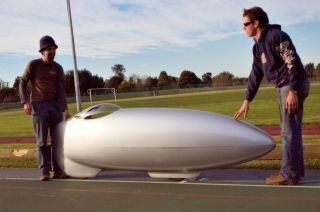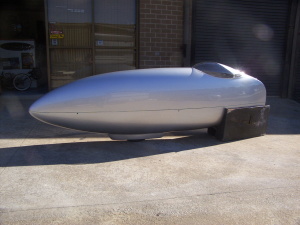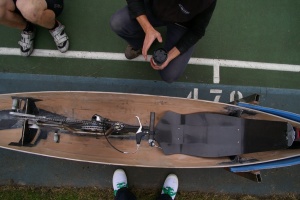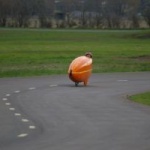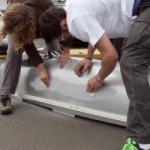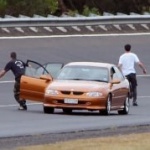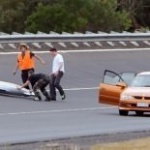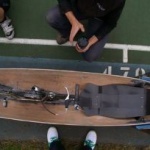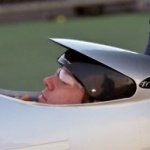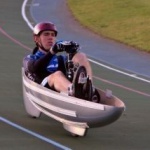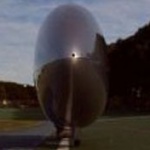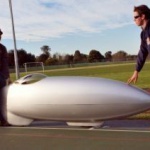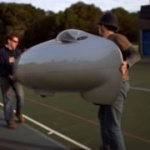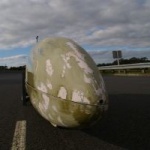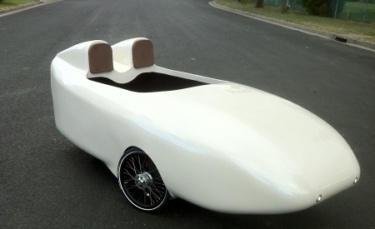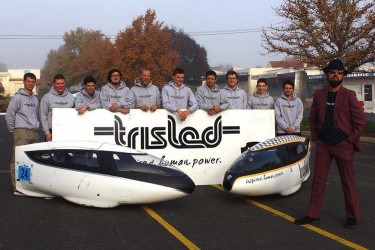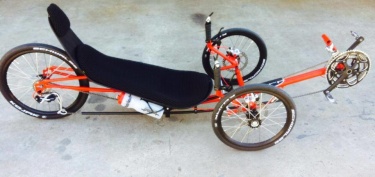The bike that built Trisled!
In October 2005, Trisled’s Director, Ben Goodall, visited the famed World Human Powered Speed Challenge at Battle Mountain in Nevada, where HPV speed records are set and broken. He witnessed first hand Sam Whittingham become the fastest man in the world (just over 130 km/h) and wet his appetite for a speed bike project of his own.
In 2006, Trisled’s HPV skills were enlisted by Tim Marquardt to design and construct a streamlined two-wheel recumbent to fit Matt Weaver’s Kyle Edge molds in time for an attempt at the Dempsey-MacCready Hour Record. The prize, which expired at the end of June 2006, was to be awarded to the first single-rider to equal or surpass 90 kilometers (55.924 miles) in just one hour.
Tim also recruited local HPV enthusiast Ken Houghton, who has a lifetime of composites experience which proved invaluable to the project’s development. Tim secured limited access to the Holden Lang Lang proving ground – a perfect surface for speed bike testing and racing. This combination of factors was enough to tempt Ben into the world of speed bike design and construction and it wasn’t long before he built his own speed bike – aptly named ’Sled- Edge’.
‘Sled-Edge’ was only ridden a hand full of times, It never set any records. But the team that created it went on to become that backbone of Trisled today!… and creators of several World record builds!
